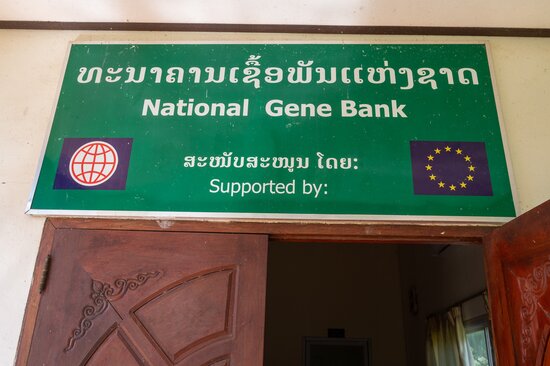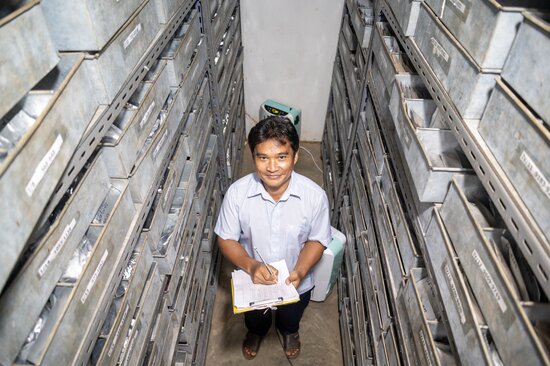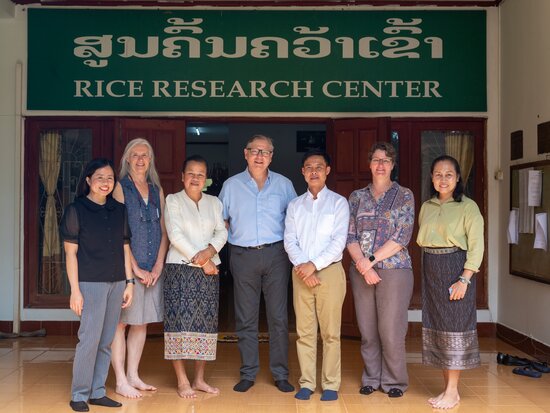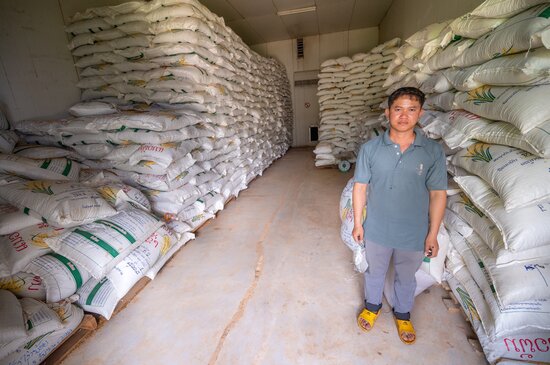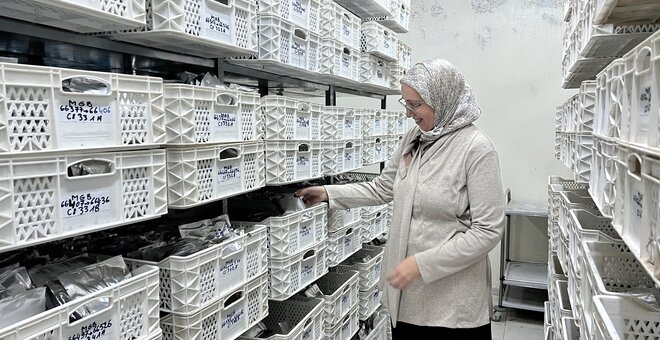Laos: Lao National Genebank
Establishment
1993
Location
Rice and Cash Crop Research Center, National Agriculture and Forestry Research Institute (NAFRI), Nongviengkham Village, Xaythany District, Vientiane Capital, Laos
Parent Organization
National Agriculture and Forestry Research Institute (NAFRI)
Mission
-
Exploration, conservation and use of crop diversity to support food and nutrition security and adaptation to climate change
Date Established
1995
Number of Samples Conserved
18,851 accessions of 85 species in seed genebank; 300 accessions of 32 vegetatively propagated crops in field genebank; 600 accessions of stevia, taro, cassava, banana and other crops in vitro (as at June 2023)
Main Crops Conserved
- Cereals — rice, maize, millet, sorghum
- Grain legumes — bean, mung bean, cowpea
- Vegetables — eggplant, yard-long bean, luffa, pumpkin, brassica, chili, cucumber, tomato
- Roots and tubers — cassava, sweetpotato, taro, yams (field genebank)
- Fruit — banana, citrus, mulberry, mango (field genebank)
- Industrial crops — wild sugarcane
Background
The Plant Genetic Resources Conservation Unit or Lao National Genebank (LNG) was established in 1995 within the Rice Research Center of NAFRI, Ministry of Agriculture and Forestry. In 2006, it was renamed the Plant Resources Center under the Vietnam Academy of Agricultural Sciences. The initial basis of its collection was 15,000 farmers’ varieties of short- and long-grain rice collected in collaboration with the International Rice Research Institute (IRRI). There are also conservation units within other NAFRI research centers, including the Horticultural Research Center, and these are linked with the LNG.
The LNG operates within the National Biodiversity Strategy and Action Plan 2016-2025.
- Some 42 modern varieties of rice in Laos are derived from genebank materials.
- More than 18,000 accessions conserved as seed in the genebank
- Nearly 10,000 seed samples distributed since 2011.
The Collection
Nearly three-quarters of the accessions conserved are rice, almost exclusively landraces or farmers’ varieties. The genebank also holds a significant collection of eggplant, sorghum and millets, cucumber, common and yard-long beans, and spinach.
Seed samples at the main genebank are stored in freezers and −20° C for long-term storage and at between 5° C and 10° C for medium-term storage. The seed is kept in a variety of containers, including foil packets, paper bags and envelopes, plastic Ziplock bags and screw-top glass jars.
Taro, yam, sweetpotato, turmeric, ginger and wild sugarcane in field genebanks are grown in large concrete tubs, while cassava is grown in open field plots.
Most of the rice collection is safety duplicated at IRRI. However, none of the other species in the collection are safety duplicated either within or outside the country.


